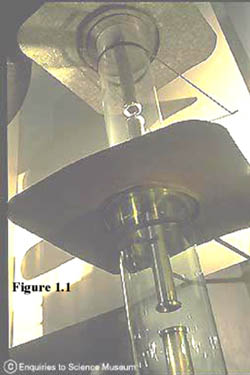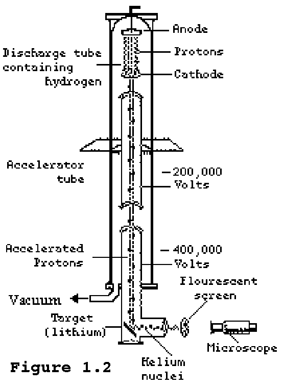Monday October 20 through Wednesday October 22
All shifts began in shutdown.
On Monday morning, Linac technicians replaced power amplifiers for two RF stations (LRF1 and LRF5). Later in the morning techs from the magnet facility accessed the Linac and repaired the LCW leak on the Lamberstson (BLAM). Throughout the day, planned hour long power outages occurred at Tevatron (TeV) sectors A1, B1, E4, and F4. During the evening shift many Booster RF stations tripped off for various reasons.
On Tuesday, during the midnight shift, operators low potted the Main Injector (MI). Booster RF stations continued to trip off occasionally. A Linac RF station (LRF5) tripped off early in the shift. It reset, but operators couldn't get the station to turn on. A Linac tech worked on a part of the station's modulator. The water group turned on the TeV LCW system mid morning. Techs worked on LRF5 again.
THE PREACCELERATOR
The FNAL Linac produces pulses of H- ions for injection into the Booster accelerator. The Linac begins with an electrostatic Preaccelerator based on the Cockcroft-Walton design. It produces H- ions with an energy of 750 keV (1 eV = one electron volt).
Accelerator History
 In May of 1928 Ernest Walton (who had been trying to produce "fast electrons") realized the indirect method he was using to create fast electrons wasn't going to work. The problem was that the lighter the ion the higher the voltage requirements. He proposed to Sir Ernest Rutherford, then head of Cambridge University's Cavendish Laboratory, a method of accelerating positively charged particles. The proton's high mass eased the need for high voltages at high frequencies.
In May of 1928 Ernest Walton (who had been trying to produce "fast electrons") realized the indirect method he was using to create fast electrons wasn't going to work. The problem was that the lighter the ion the higher the voltage requirements. He proposed to Sir Ernest Rutherford, then head of Cambridge University's Cavendish Laboratory, a method of accelerating positively charged particles. The proton's high mass eased the need for high voltages at high frequencies.
John Cockcroft, using Gamow's theory of tunneling, had also proposed using protons as a means of disintegration. Walton built most of the high voltage and accelerator apparatus while Cockcroft solved many of Walton's engineering problems.
To the right is a picture of Cockcroft and Walton's original accelerator.
The Cockcroft-Walton design, completed at Cavendish in 1932, was the first linear accelerator. Their work on the transmutation of lithium not only corroborated Gamow's theory, but it was the initial verification of Einstein's law concerning the equivalence of mass and Energy, E=mc2.
The larger machines of the 1950s and 60s and high-energy physics as we know it, are a direct result of the fundamental research performed by John Cockcroft and Earnest Walton. As Rutherford said, "it's the first step that counts."

Above is a diagram of the original Cockcroft-Walton accelerator, Cavendish Laboratory, Cambridge, c. 1932. But the accelerator was not the only significant achievement; the high voltage multiplier was just as important.
In 1951, during Professor I. Waller's presentation of the Nobel Prize in Physics to Walton, Waller said:
The work of Cockcroft and Walton was a bold thrust forward into a new domain of research. Great difficulties had to be overcome before they were able to achieve their first successful experiments at the beginning of 1932. By then, they had constructed an apparatus, which, by multiplication and rectification of the voltage from a transformer, could produce a nearly constant voltage of about six hundred thousand volts. They had also constructed a discharge tube in which hydrogen nuclei were accelerated. Causing these particles to strike a lithium layer, Cockcroft and Walton observed that helium nuclei were emitted from lithium. Their interpretation of this phenomenon was that a lithium nucleus into which a hydrogen nucleus has penetrated breaks up into two helium nuclei, which are emitted with high energy, in nearly opposite directions. This interpretation was later fully confirmed.
Thus, for the first time, a nuclear transmutation was produced by means entirely under human control.
Accelerator Update Archive
More Information
For Tevatron luminosity charts and the current status of Fermilab's
accelerators and detectors (live!), please go to Fermilab Now
Comments and Suggestions
What do you think about the Accelerator Updates? Please send comments and suggestions to: accelupdates@fnal.gov.

|